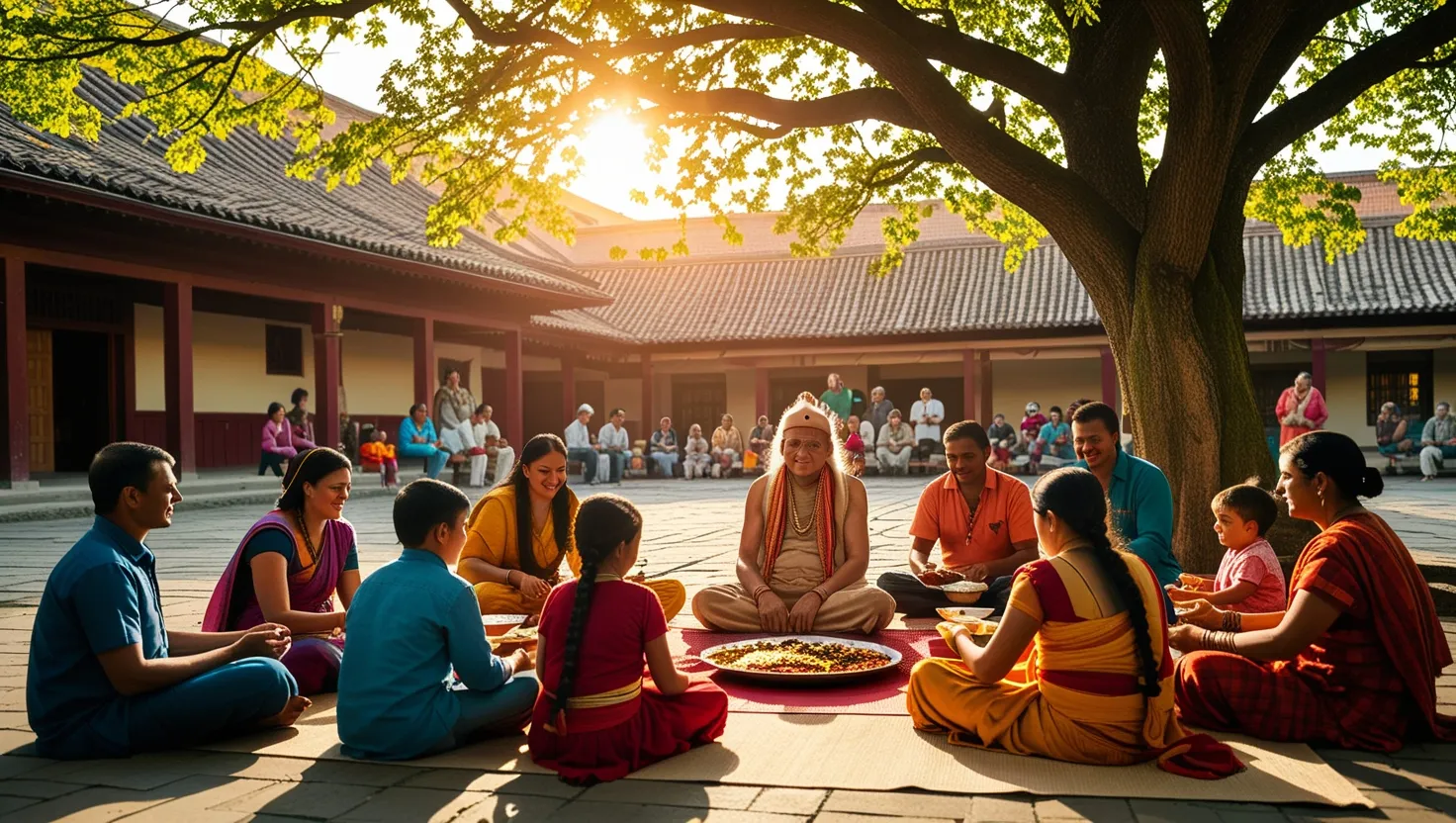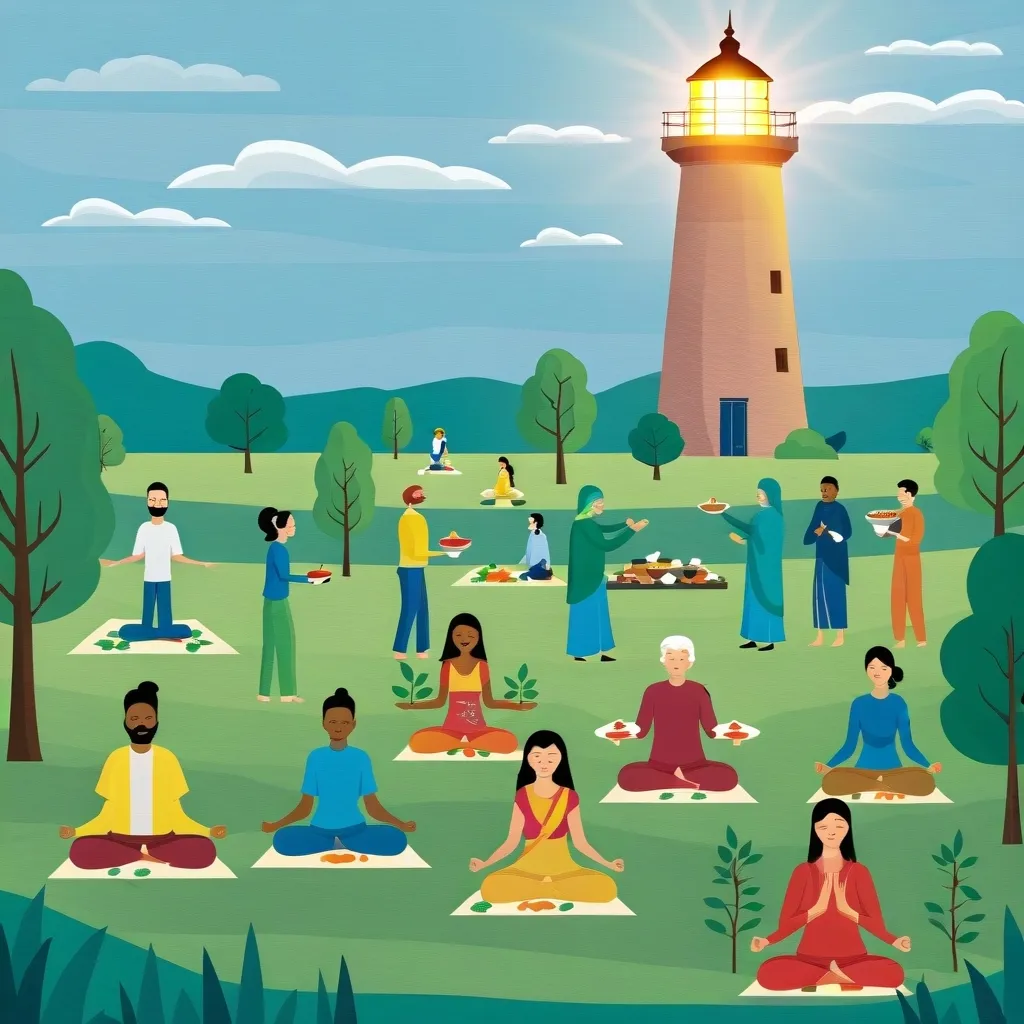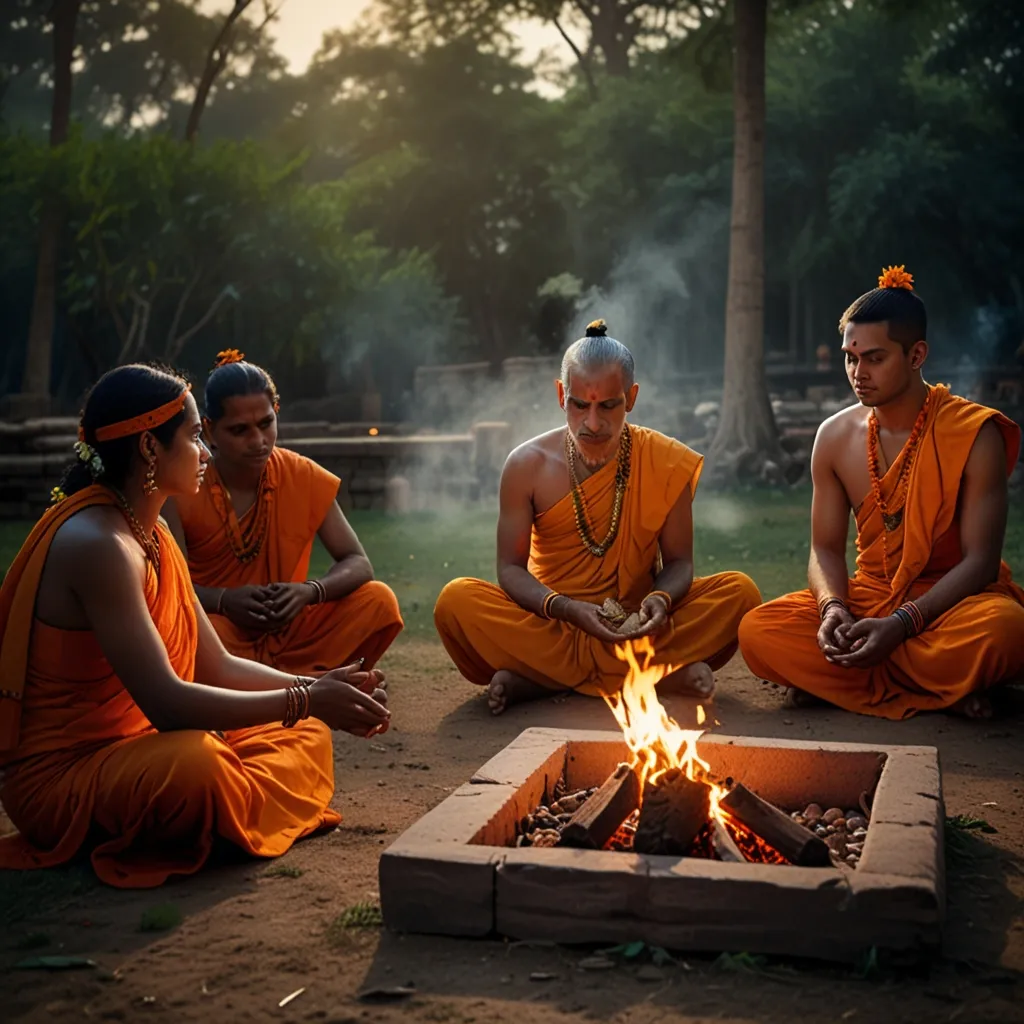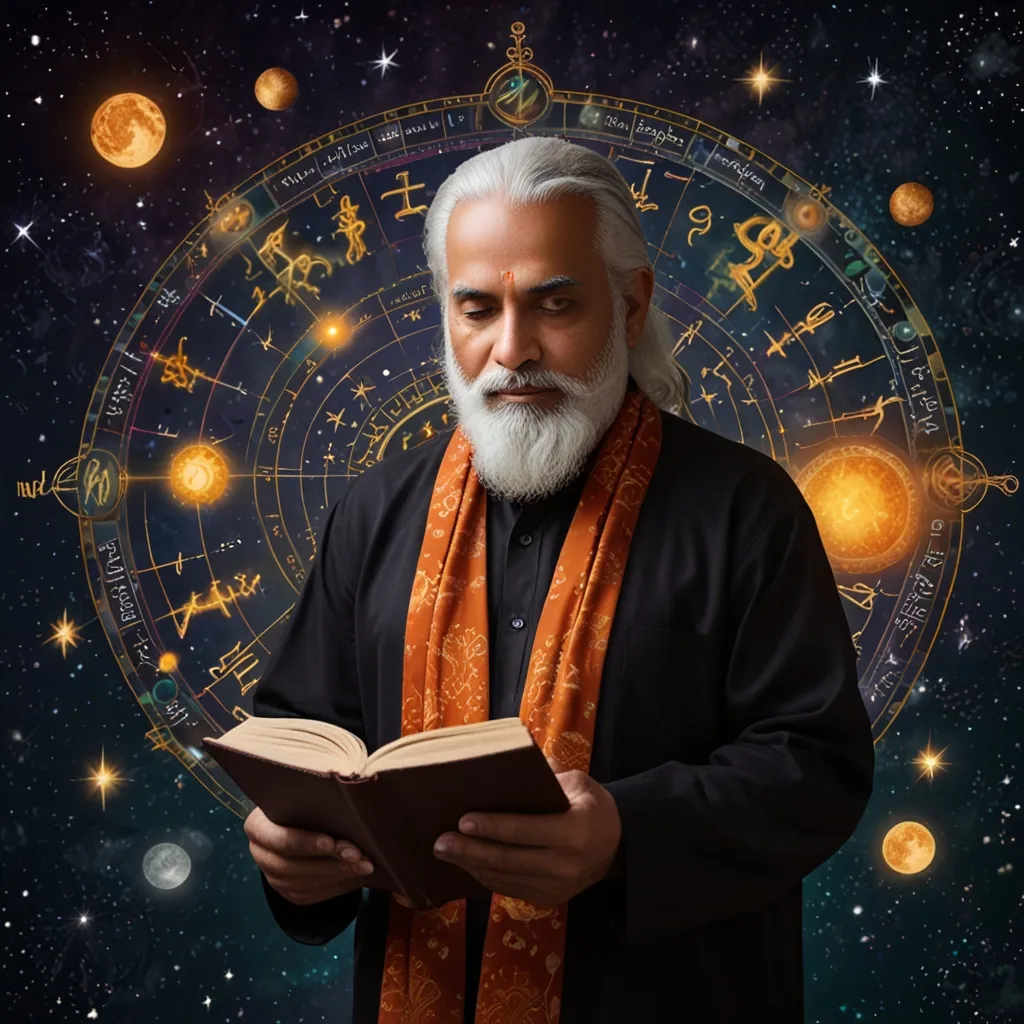You ever find yourself looking at the old texts—like the Vedas—and wondering, “How could something written thousands of years ago possibly have anything to teach me about relationships today?” I get it. Our world spins so fast, and advice from ancient India can sound miles away from real life. Yet, once you scratch beneath the surface, you discover not just old wisdom, but practical, almost uncanny insights into working, loving, and living with other people. Let’s pour some coffee and chat, because some of these Vedic principles are about to flip your perspective on connection.
First off, have you ever thought about the idea of duty, or dharma, beyond its usual “do good” gloss? Here’s the thing: in the Vedic view, dharma isn’t some dry law book you follow. It’s more like invisible architecture holding up each relationship—parent to child, spouse to spouse, neighbor to neighbor. Each link has its own context. Parents aren’t just biologically programmed to care for their children; their responsibility is also to help them grow spiritually and emotionally. Later, kids return that energy as their folks age—not out of guilt, but because the circle never closes. Neglect these small, daily exchanges, and, according to the Mahabharata, you don’t just upset your own family—you throw the entire cosmos out of balance. Wild, right? Imagine if every time you skipped out on a promise or ignored someone’s need, you knew the ripple could go universe-deep.
Now, don’t laugh, but the way the Vedas approach truth-telling would make most group chats and dinner tables a whole lot more peaceful. It’s not just about “saying what’s true.” It’s how you say it. The Taittiriya Upanishad puts it directly—tell the truth, but never with harshness. Can you picture a world where every hard conversation begins with, “How can I say what I must without wounding you?” Families sometimes held councils, passing a sacred object around so each voice was truly heard, not interrupted. That’s not just poetic. That’s practical. What if you tried it at your next family meeting or work huddle? Giving everyone a token of attention—literally—could cool tensions before they turn into cold wars.
Service—seva—is another Vedic gem that gets overlooked. In the ancient system, offering service wasn’t for the “saints” or the “extra good.” It was expected of everyone, every day. Five obligations, called the Pancha Mahayajna, kept society glued together: respect for ancestors, kindness to guests, feeding animals, caring for elders and teachers, and honoring nature. Imagine a world where before you closed your laptop, you paused to share a meal, cared for a stray animal, or passed on a bit of wisdom—no expectation, just a daily rhythm. You and I both know loneliness is a modern epidemic. The Vedic system cut it off at the root by making service as essential to daily life as brushing your teeth.
And here’s a twist: even conflict resolution had its own choreography. Ever had an argument where you wish you could just hit ‘pause’ and come back when you’re cooler? The Vedic way literally separated people first, then brought them back with a neutral elder to ask, “What happened? Who got hurt? What can we do to repair this?” Sometimes the solution was creative—a farmer who trampled his neighbor’s crops might pay it back by working the fields or sharing his next good harvest. Ceremonies to celebrate the reconciliation would follow: joint prayers, shared meals, and washing away the past, quite literally, with water. Isn’t that a powerful thought? What if, next time you’re stuck in a grudge, you asked: What would feel like true repair—not just an apology?
Let’s talk everyday stuff. The Vedic world didn’t just preach about connection—it built it in, physically. Household architecture was designed to “engineer harmony.” Central courtyards for families to gather, kitchens facing east for shared sunrise meals, sleeping arrangements for elders and kids set up for natural comfort and daily check-ins. You’ve heard of open-plan homes, but how about a home that nudges you into deeper connection every day?
Economics? The system was surprisingly advanced. Villages set aside portions of their harvest for anyone who needed help. Land boundaries were refreshed and reaffirmed together every year, so memories stayed clear and conflicts got nipped early. Even kings had emergency grain for everyone, not because it looked good, but because it kept the peace. Ask yourself: what would change in your community if every successful person set aside 10-20% of what they earned for real emergencies?
Emotional intelligence in the Vedic world was not just “nice to have.” Each morning or evening, families would greet each other with small rituals—eye contact, respectful words, sometimes just water offered with intent. I love this: couples would review the day together, checking in not just on chores, but on feelings. And get this—kids in Vedic schools practiced acting out conflicts to learn how to put themselves in someone else’s shoes. What would happen if every school today taught empathy alongside math and reading?
Here’s a line that makes me stop: “When one perceives the unity of existence, hatred finds no footing.” That’s from the Brihadaranyaka Upanishad. The Vedas saw the biggest trap as forgetting that the “other person” is, at some level, another version of yourself. Every rule—from service, to communication, to economic sharing—keeps reminding you, “You belong here. You are seen. Your needs matter.”
Maybe the most surprising bit? Celebrating difference was built in. Festivals weren’t one-size-fits-all; they celebrated every region’s quirks, from food to dance to language. Community kitchens would purposefully mix up ingredients from all castes and communities—not just as a nod to unity, but to physically embody it. Storytellers kept local dialects alive, reminding everyone that “being different” is just another way of belonging.
And leadership—oh, leadership! Ancient kings had to learn ethics for years before taking the throne, and they were expected to admit mistakes in public. Tax officers visited the fields themselves to check on your crops before setting any tax. That’s radical transparency, centuries before we had the word.
Even the environment got the family treatment. Rivers were called “mother.” Mountains, “protectors.” When villages settled water disputes, they’d invoke river goddesses as witnesses to their promises. You think twice before breaking a vow if you’ve called a sacred force to pay attention.
Fast forward to today, and you’ll find echoes of these Vedic systems popping up in places you wouldn’t expect. Neighborhood mediators using family councils as their model. Companies adopting community profit-sharing. Schools building empathy into the curriculum. Families, now scattered over continents, running online ancestor-honoring ceremonies to keep roots alive.
So here’s my question for you: In the hustle of today’s world, what would it take for you to rewire just one relationship using these old blueprints? What if, next time you’re about to speak a harsh truth, you paused and asked, “How can I make this easier to receive?” Or if, instead of scrolling your phone, you looked your child or partner in the eye and asked about their day—not as a checklist, but as a ritual?
Let me leave you with a quote that might just stick:
“When you offer yourself in service, you are the one who is nourished.”
Maybe, just maybe, the Vedas weren’t so much about following rules as about building a world where everyone matters—where connection is a practice, not an accident.
Would you change anything about how you connect if you thought every small act could tilt not just your day, but the world, a bit more towards harmony? That’s the kind of question that keeps me up at night. And honestly, I wouldn’t have it any other way.






